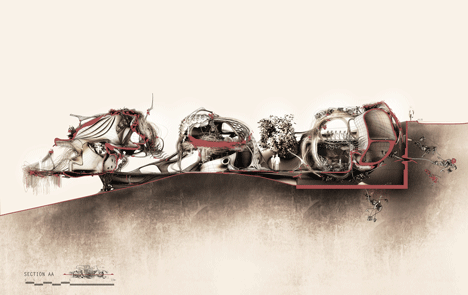Futuristic family home by Gonzalo Vaíllo Martínez based on biogenetic forms
This conceptual design for a family home by postgraduate architecture student Gonzalo Vaíllo Martínez features a fluid structural frame, a skeletal staircase and a skin incorporating blinds that open and close like gills (+ movie).
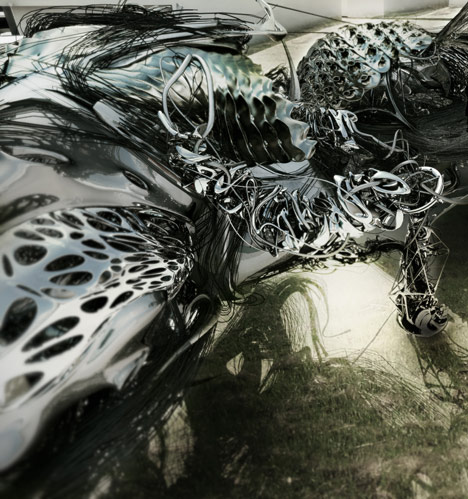
Starting with the standard functional spaces required by a single family residence, Vaíllo Martínez based the form of the house on scientific advances in fields such as microcellular systems and biogenetics.
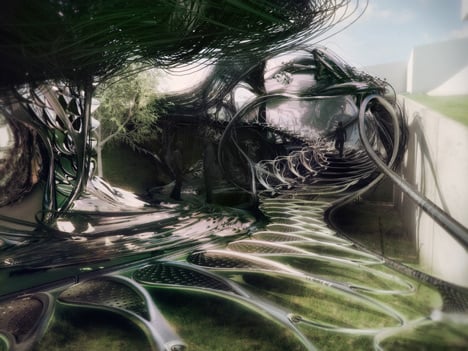
"Everyone has in mind what the standards of a normal house are today," Vaíllo Martínez told Dezeen. "They are the principles established in Modernism, where spaces were separated by function and the aim was how to relate these spaces to one other and the surroundings."
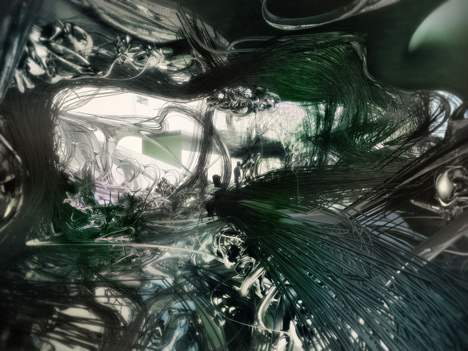
"This project is based on this distribution of the program in a very simple but strict way," he continued. "The house is an exercise in blending a much more complex, multiple and emotive architectural language with a common single family house program."

Designed as a modular system that can be adapted to any site, this version of the house was developed for a sloping plot at 2217 Neutra Place in California, which is located between two houses designed by Modernist architect Richard Neutra. Vaíllo Martínez feels these houses represent the outmoded typologies of twentieth century architecture.

"When the system is moved into a real location it evolves and mutates according to the constraints defined by the surroundings," he explained. "It can be placed anywhere and the specific conditions of each location will modify the house in one way or another."
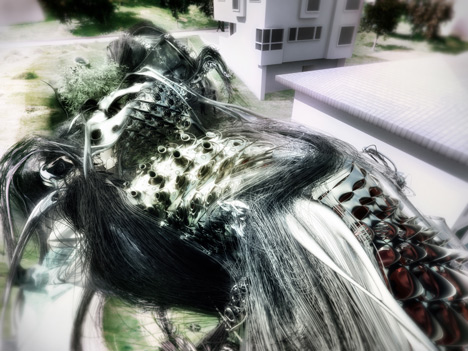
The house comprises three interconnected units, with an entrance leading to pods containing various services which are partially submerged in the hillside and connected to the main living areas below by a fluid staircase.
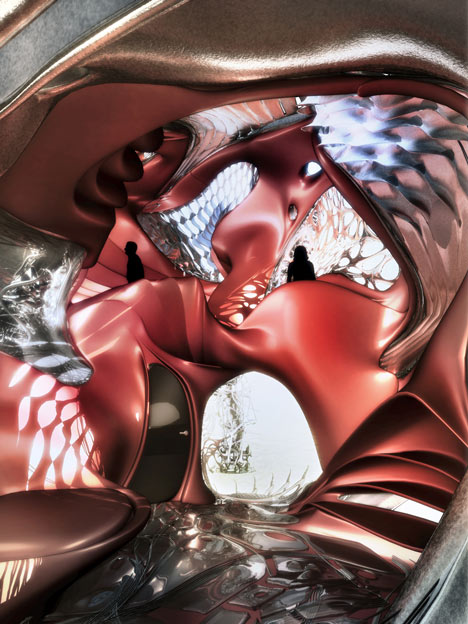
A third unit housing the bedrooms and a terrace is detached from the main structure and raised above the ground at the bottom of the site.
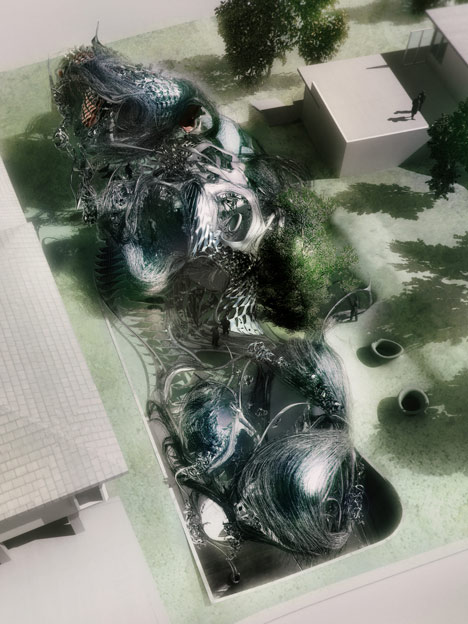
Using 3D computer modelling processes that enable surfaces to expand, contract and respond to different parameters, the shape of the house was animated and deformed to match the topography of the site.
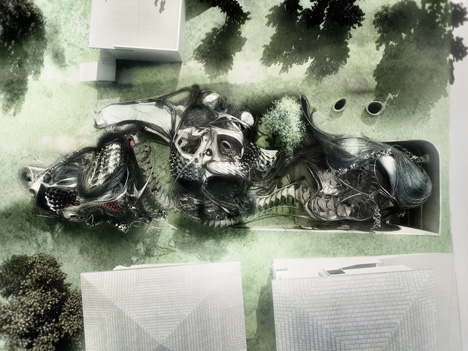
The fluid skeleton is intended to be constructed from structural concrete, with the complex facade panels and tangled supporting framework produced using 3D printing processes.
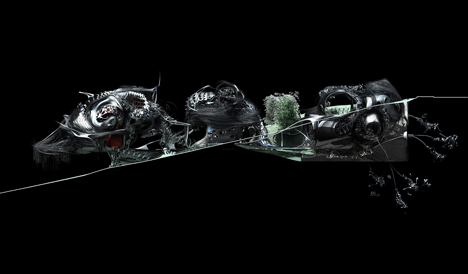
Organic louvred panels incorporated into the building's skin open and close like gills, while other openings stretch and widen to adjust the amount of light entering the interior.
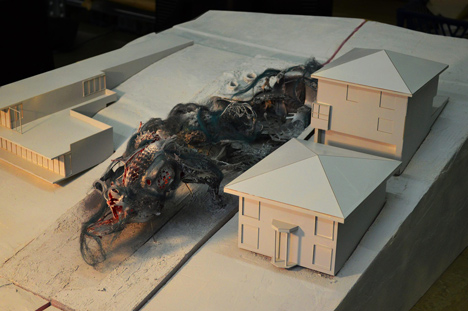
Vaíllo Martínez suggested that, although the building may appear unrealistic, it could be constructed today using contemporary technologies and manufacturing methods.
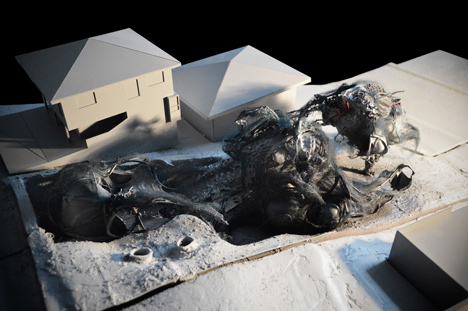
"We have more than enough technology not only to design projects such as this one, but also to materialise them," he claimed. "This is not science fiction or something possible in the near future, it is possible today if we push the boundaries of the resources we have now. Budget is another issue."
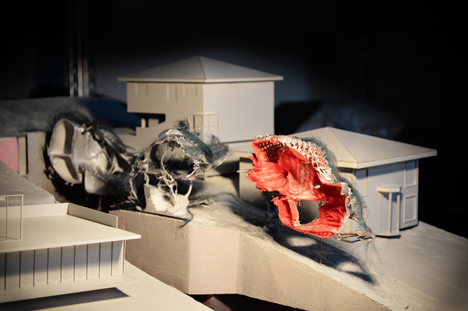
The project was developed by Vaíllo Martínez during his postgraduate studies at the University of Applied Arts Vienna, and follows his proposal for a cave-like auditorium for the Tate Modern gallery which he designed as an undergraduate at Spain's Universidad de Alcalá.
Here's some more information from Vaíllo Martínez:
2217NPL House, Gonzalo Vaíllo Martínez
Located in the outskirts of Los Angeles, the starting point of the design is based on the standards of a single family house. The exuberance of the form is the tool that develops an aesthetic able to corrupt the original principles and establish a negotiation with the contemporary way of life in a day-by-day house.
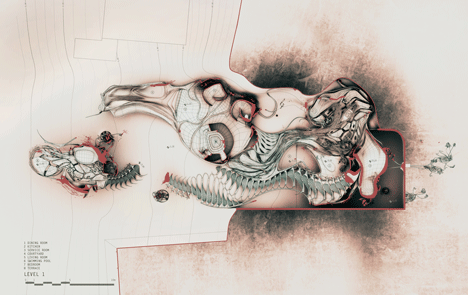
The project is thought as a continuous mixture of conventional elements that create an emotional empathy with something that is familiar for everyone (social memory), combined with external contaminations that brings new behaviors and perceptions of the spaces.
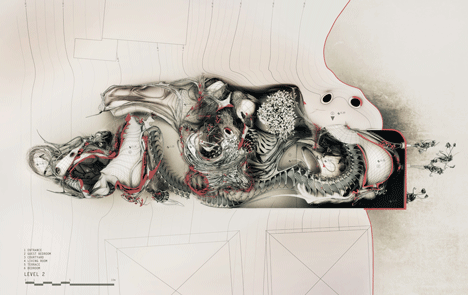
The house is divided into three units. The first one is a half-underground piece, which contains the main entrance and the services of the house. The public areas are located in the second one (on the ground) and in the last one appears the private rooms, which detach from the ground. In this way, the three units are positioned in the same height and it is the relationship with the sloped topography that defines each piece structurally.
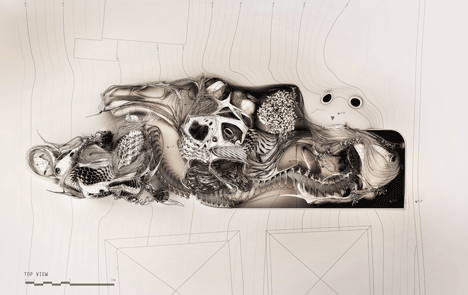
The aggressive exterior made out of the combination of a wire-linework, mobile facade panels and metallic surfaces, creates a contrast with the soft and continuous interiors.
